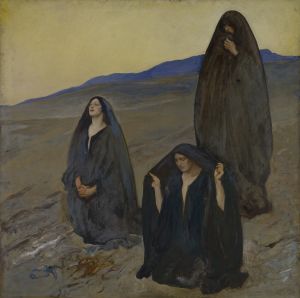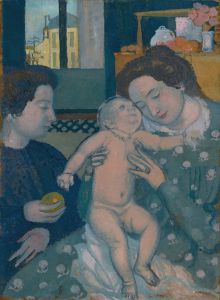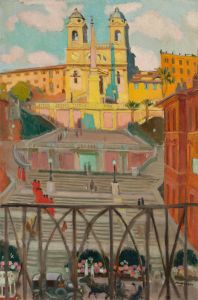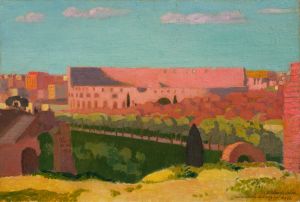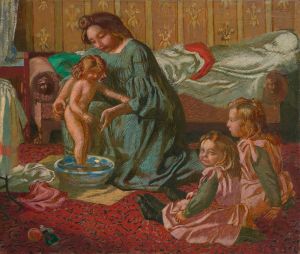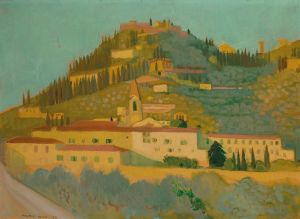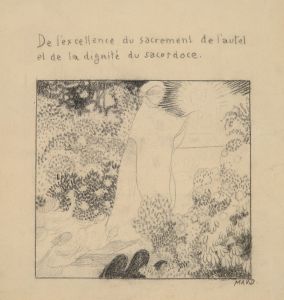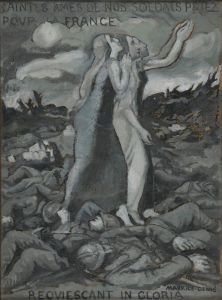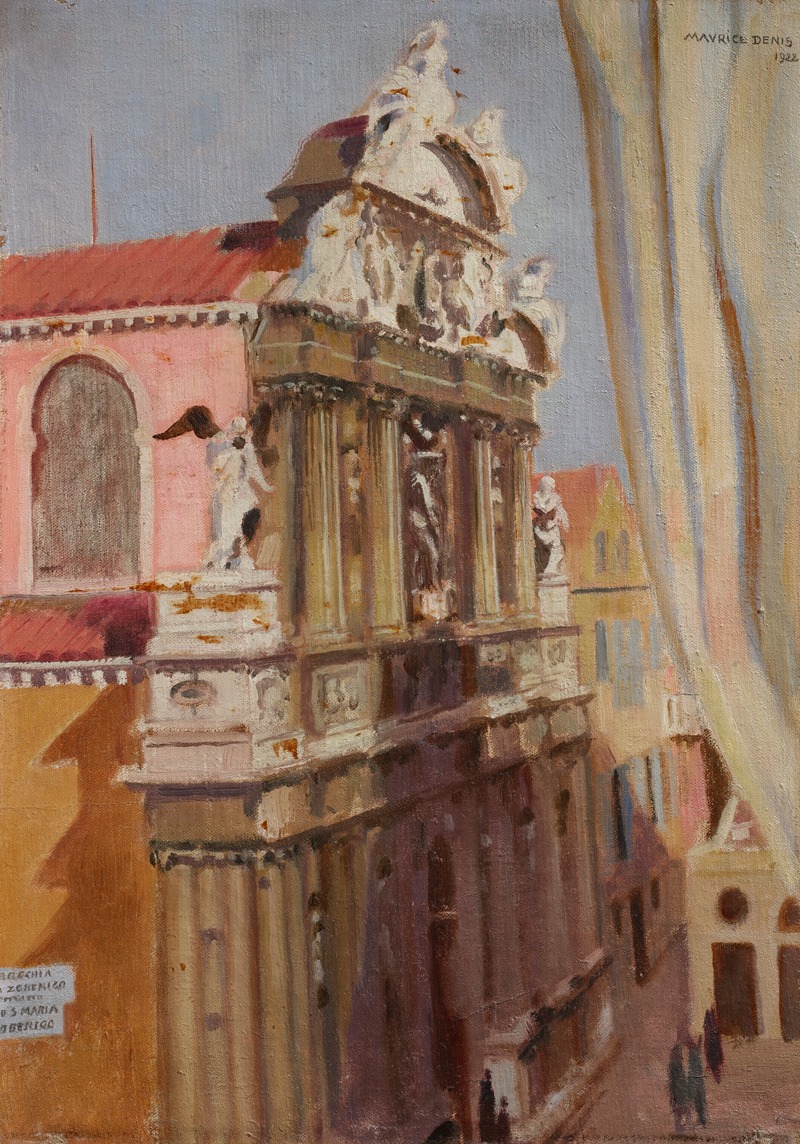
Santa Maria Zobenigo, Venise
A hand-painted replica of Maurice Denis’s masterpiece Santa Maria Zobenigo, Venise, meticulously crafted by professional artists to capture the true essence of the original. Each piece is created with museum-quality canvas and rare mineral pigments, carefully painted by experienced artists with delicate brushstrokes and rich, layered colors to perfectly recreate the texture of the original artwork. Unlike machine-printed reproductions, this hand-painted version brings the painting to life, infused with the artist’s emotions and skill in every stroke. Whether for personal collection or home decoration, it instantly elevates the artistic atmosphere of any space.
Maurice Denis, a prominent French painter and theoretician associated with the Symbolist and later the Nabi movement, created the artwork Santa Maria Zobenigo, Venise. This painting depicts the Church of Santa Maria del Giglio (commonly referred to as Santa Maria Zobenigo), a Baroque-style church located in Venice, Italy. The church is renowned for its ornate façade, which features intricate sculptures and reliefs dedicated to the Barbaro family, who financed its construction in the late 17th century.
Denis, known for his emphasis on decorative qualities and the spiritual dimension of art, often drew inspiration from religious and architectural subjects. His work reflects a synthesis of Symbolist ideals and a modern approach to composition and color. In Santa Maria Zobenigo, Venise, Denis captures the essence of the Venetian church through his characteristic style, which blends flat planes of color with a rhythmic arrangement of forms. The painting likely reflects his admiration for Venice's rich artistic and architectural heritage, a recurring theme in his oeuvre.
The exact date of the painting is not definitively documented, but it is consistent with Denis's broader body of work that often explored sacred and historical themes. His travels to Italy, including Venice, were instrumental in shaping his artistic vision, as he sought to merge classical traditions with modernist sensibilities.
As with many of Denis's works, Santa Maria Zobenigo, Venise exemplifies his belief in the decorative and symbolic power of art. The painting does not aim for photographic realism but instead conveys an idealized and harmonious interpretation of its subject. This approach aligns with Denis's famous assertion that a painting is "essentially a flat surface covered with colors assembled in a certain order," emphasizing the autonomy of art as a visual language.
While the painting itself is not as widely known as some of Denis's other works, it remains a testament to his enduring fascination with the interplay between architecture, spirituality, and artistic expression. Today, Maurice Denis is celebrated as a key figure in the transition from 19th-century academic traditions to the modernist movements of the 20th century, and Santa Maria Zobenigo, Venise contributes to his legacy as a painter deeply engaged with both the past and the future of art.








